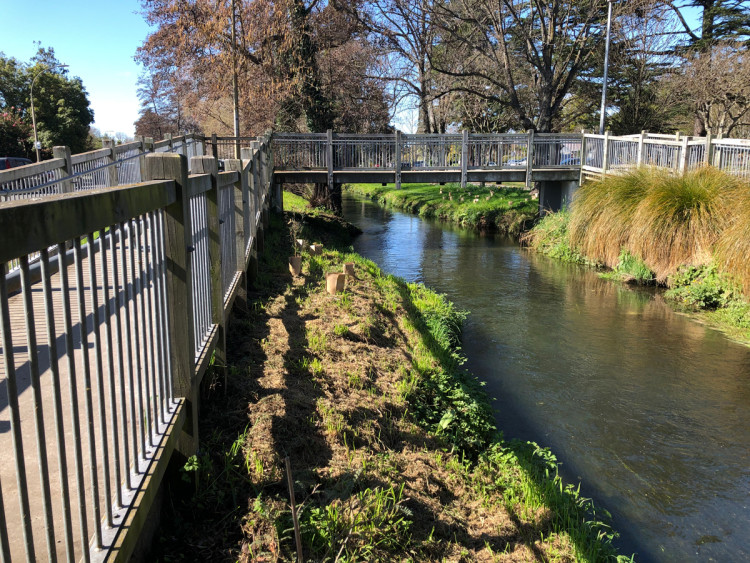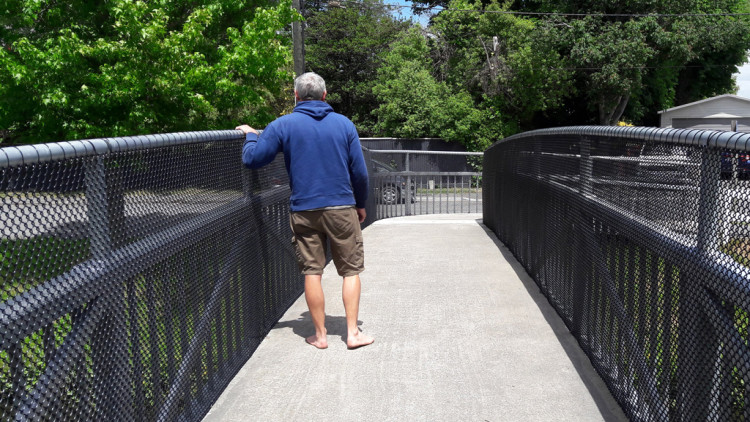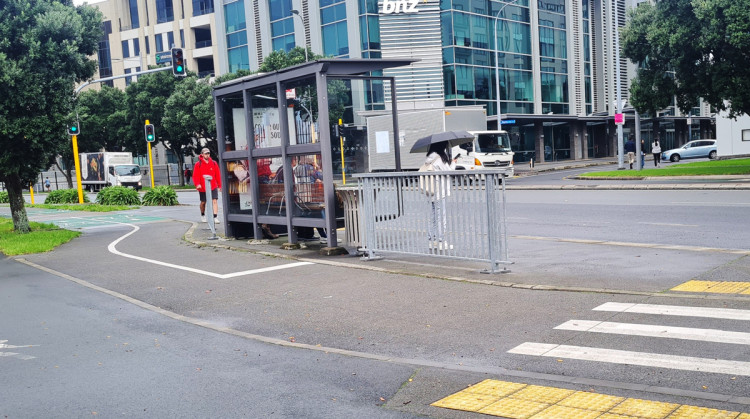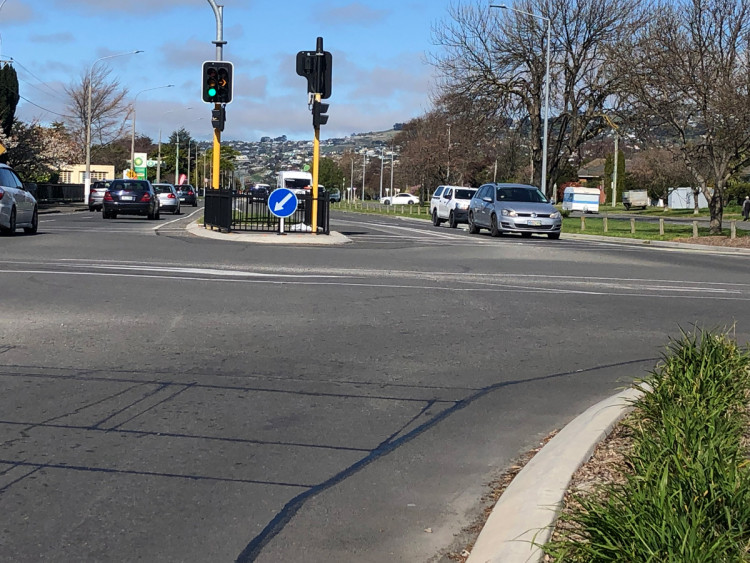In urban environments, pedestrian fencing should be avoided and alternative layouts or other options should be considered first, such as planters, landscaping or other street furniture that can be installed in the street furniture zone to discourage pedestrians from crossing in unsafe locations as illustrated in the photo below. This is because barriers and fencing have many drawbacks. They may:

Landscaping in the street furniture zone to discourage pedestrians from crossing informally, Tamaki Drive, Auckland. (Photo: Patricia Vasconcelos)
The exceptions being to restrict access to unsafe locations, eg railways and motorways, and to protect pedestrians from vertical drops and other hazards, such as waterbodies.
The table below highlights some situations where fencing may be appropriate.
Table: Places where pedestrian fences should be considered
|
Safety issue |
Examples |
|---|---|
|
Where there are serious safety hazards, such as: |
|
|
Where there is a severe change of gradient next to a footpath, due to: |
|
|
Where it is especially unsafe for pedestrians to cross a road, because: |
|
The visual character of urban streets as well as CPTED issues such as entrapment need to be considered before installing barriers or fencing.
Fencing at railway crossings is covered in the rail crossings section of this guidance. Fencing along railways is context dependent and KiwiRail should be consulted for distance, height and material specifications .
Fencing is required to protect pedestrians from vertical drops such as on bridges, steep batters, vertical drops and other hazards.

Pedestrian fence on footbridge, Christchurch. (Photo: Ann-Marie Head)
Fencing should be 1.1m high and comprise vertical rails with two horizontal rails at the top and bottom. In the case of a bridge, if it is to be used by people cycling too, the minimum height is 1.2m where the risk of a person cycling vaulting over the barrier is low, and 1.4m where the risk of angled collision or launch is high (for example at tight bends or high cycle speeds) as outlined in the Waka Kotahi Bridge Manual.
Bridge Manual Appendix B [PDF, 817 KB]
Pedestrian fencing should ideally be low enough for people to be able to see over the fencing and ideally visually permeable to maintain pedestrian viewing qualities and maximise natural surveillance (ie personal security).

High fencing obscures views for pedestrians on a footbridge. (Photo: Jeanette Ward)
There are some situations where it may be necessary to channel pedestrians exposed to a serious safety hazard, for example to stop crossing high speed roads such as motorways or where public transport patrons need to cross cycle facilities (as shown in example photo below). In these situations, chain or welded mesh pedestrian fences can be used, or more robust fences may be required to limit people’s ability to climb over or break through them. Note that pedestrian fencing can restrict vehicles.

Fencing to direct pedestrians egressing bus stop area to safer crossing point across cyclewayat bus stop, Quay Street, Auckland. (Source: Shendi Mani)
Vehicle barriers might also be required given that pedestrian fences are usually not robust enough to stop vehicles that leave the roadway from entering the footpath. It is important to ensure sufficient distance so this risk is mitigated.
When used barriers and fencing should comply with the following criteria:
The photo below shows how the geometry, levels and placement of pedestrian fencing at a signalised intersection results in difficulty for drivers to see approaching vehicles as they are obscured by the fencing.

Pedestrian fencing in median makes it difficult for drivers turning right across to see approaching through vehicles. (Photo: Ann-Marie Head)
Austroads. (2017). Guide to Road Design Part 6A Paths for Walking and Cycling(external link). AGRD06A-17
Department for Transport. (2009). Local Transport Note 2/09 Pedestrian Guardrailing(external link).